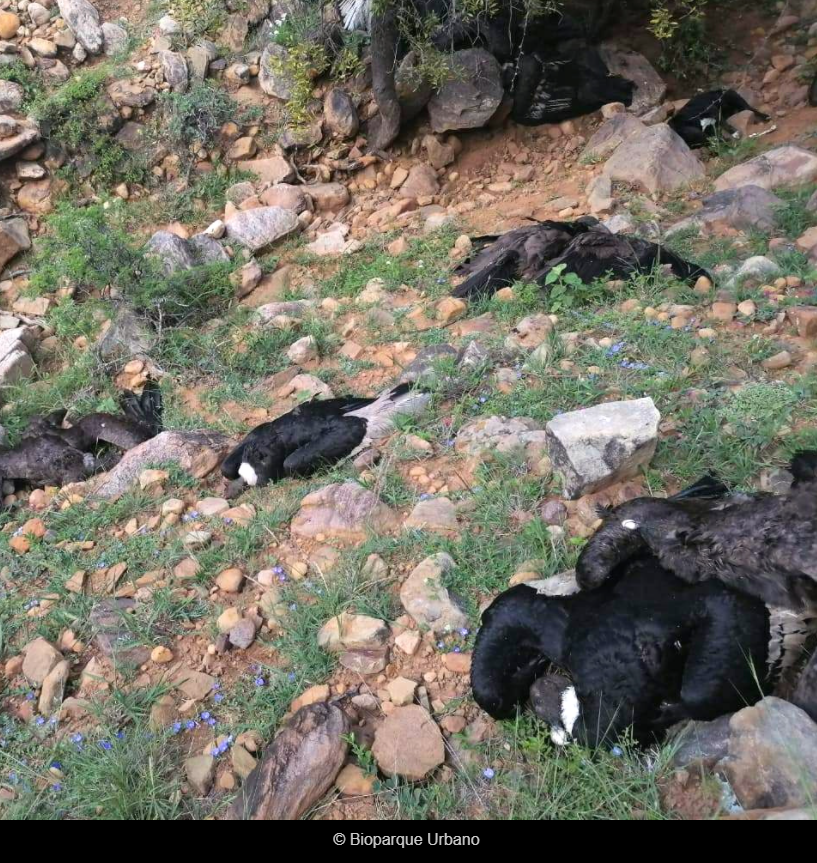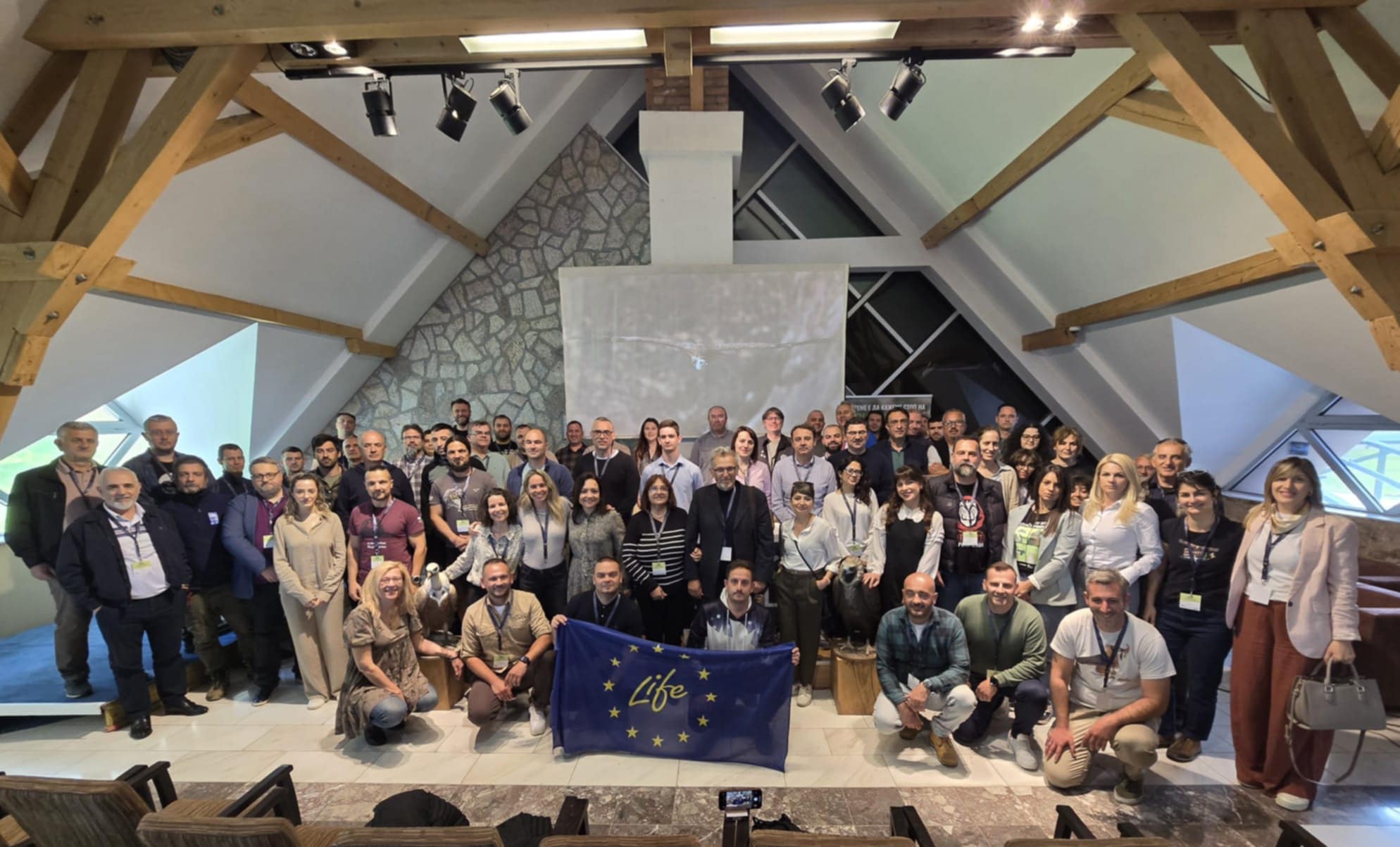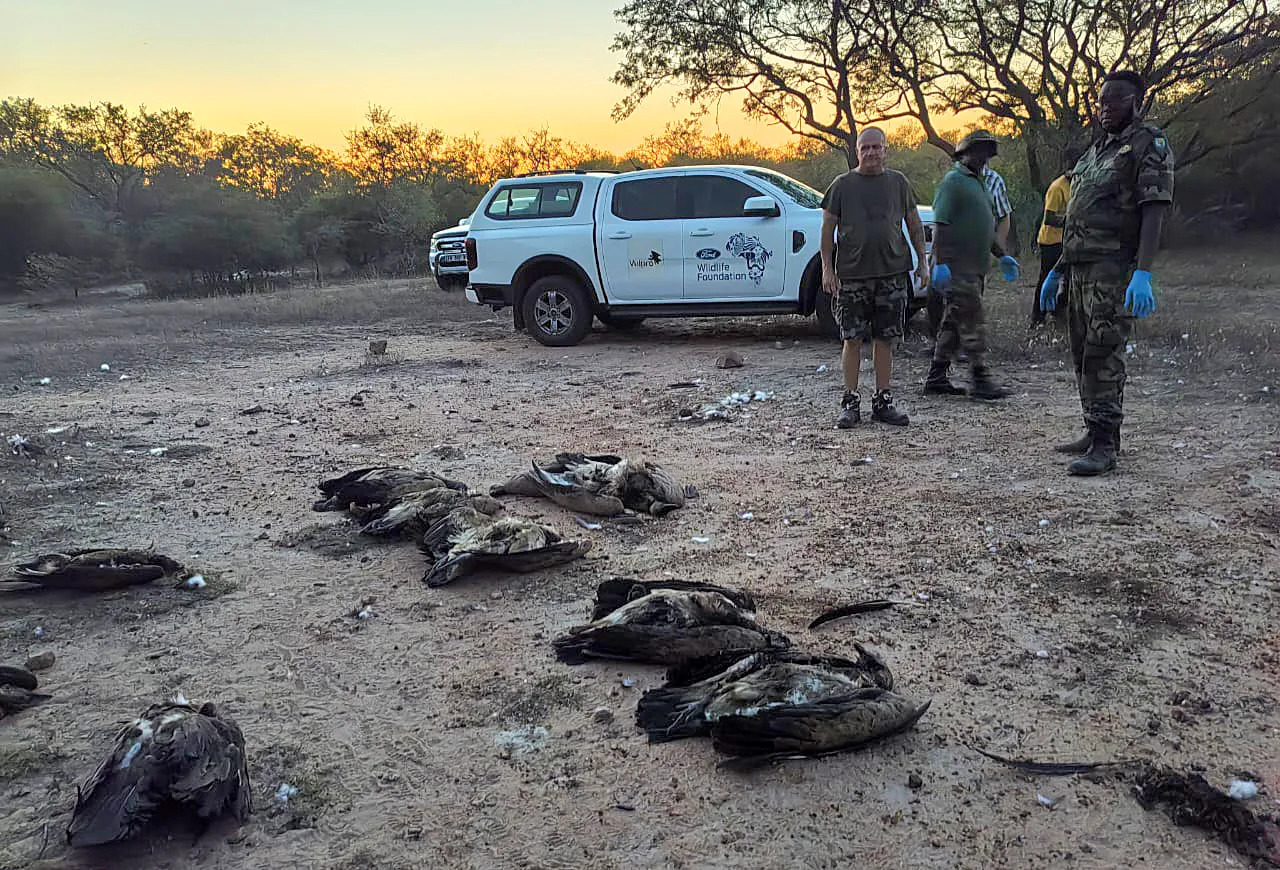
We regret to inform you that yet another suspected mass poisoning incident recently took place, causing significant vulture mortality. This time, it occurred in Bolivia, South America, resulting in the death of at least 35 Andean Condors, an emblem of the national fauna.
Poisoning killed 35 Andean Condors in Tarija
On 5 February 2021, Tarija community members filed a complaint with the Pofoma Bolivian Police, reporting many dead condors at a ravine. After arriving at the scene, the police located 35 Andean Condor carcasses, of which 18 were male and 17 female.
Alongside the condors, authorities also discovered a goat and several dogs. It seems they are taking this incident seriously — they launched an investigation to determine what caused this mass mortality to help identify and prosecute the culprit(s) responsible. Based on the evidence collected so far, the police suspect it is a poisoning case, although it is unclear if the species were the target. In most poisoning cases, poison baits are intended for predators that may harm livestock or game animals rather than vultures. Still, since vultures scavenge upon dead animals, they also fall victim to this unselective and damaging practice.
About the Andean Condor

The Andean Condor (Vultur gryphus), which calls the Andean chain home, has a 3 metre wingspan and weighs up to 15kg. It is the world’s heaviest soaring bird, flapping its wings only 1% of the time. Many scientific studies and conservation actions have tried to preserve this New World Vulture species across South America. Still, with only about 6,700 individuals remaining in the world, the species holds a vulnerable status, facing rapid and steady population declines across its range, so this incident caused an irreversible blow to the species’ populations — in fact, it is the largest case of its kind known in Bolivia. What a tragic outcome for an emblematic species that coexists with rural communities.
Tackling vultures’ biggest threat
Poisoning is considered the biggest threat to vultures worldwide, according to the Vulture Multi-species Action Plan (Vulture MsAP), co-developed by us here at the Vulture Conservation Foundation, and endorsed by the Convention for Migratory Species. The VCF is particularly active in fighting this threat and is implementing many projects across Europe and many actions against poisoning. In Europe, we are actively pursuing different lines of work to fight this threat, among which is the BalkanDetox LIFE project. This new project is working across seven Balkan countries to minimize the scale and scope of illegal wildlife poisoning by raising awareness and building capacities.
Stay informed with vulture conservation news by following the VCF on Facebook and Twitter.






